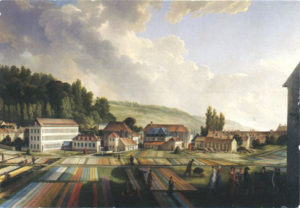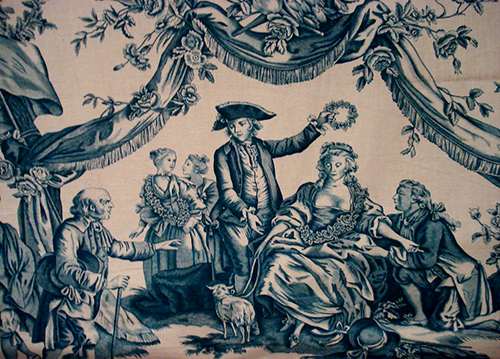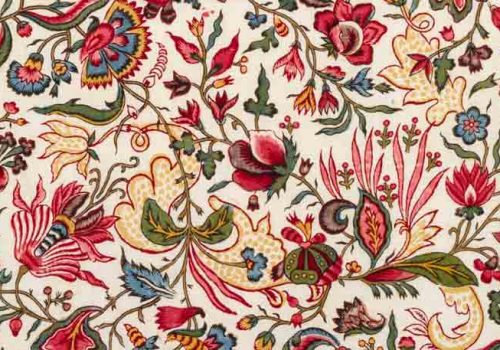Oberkampf. You know the metro station, which was named for the street. The street was named for Christopher-Philip Oberkampf in 1864. But do you know who Oberkampf was and why there is a street named after him?
Christopher was a German Protestant immigrant to France in the 1700s under the Ancien Regime. He was a man who climbed the social and financial ladder by his own grit. He came from Germany and spoke only German when he arrived in Paris as a trained, but young, textile printer and dyer. He died a millionaire, head of an empire of 1300 workers and fashion trend-setter. The odds were against him, but his tenacity, creativity, technique, innovation, intuition and thick skin makes him one of the best immigration success stories in history. And that’s why Paris has a street, metro and neighborhood named after him. But in fact though he did not live and work in Paris but in the nearby (now) suburb of Jouy-en-Josas. You probably know this town as the location of the business school HEC.
His fabric, called Toile de Jouy after the name of the town where Oberkampf set up his factory, was innovative. Christopher was a master of the new technique of printing motifs onto white cotton. He made lovely affordable printed fabrics for dresses and furnishings. Bourgeois women could now wear beautiful dresses like those at the court. The most evocative images of his cloth, all drawn by accomplished artists, are detailed bucolic scenes printed in one color on a white background. But Christopher was also a master of choosing the right motif at the right time. Floral patterns were popular, followed by Persian motifs. During the American Revolution fashion sported images of Liberty, then scenes from literature and even current events such as the first hot air balloon flight. After the French Revolution styles changed again and fabrics were more geometric and new colors were created such as violet breaking with the fashions of the royal court. Always keeping one step ahead Oberkampf was a trend-setter and lead the beginnings of fashion for the-every-woman and Paris as fashion capital of the world. He also lead the industry in technical innovation moving from hand wood block printing to semi-automated copper plates and beyond. His renown and savoir-faire allowed him to meet George Washington, Napoleon the First and the Empresses, fellow German-speaker Marie-Antoinette, the Pope’s emissary, the scientists Monge, Laplace, Lagrange, Chaptal, Gay-Lussac and many other illustrious people.
Having become French and ennobled he survived the French Revolution by adapting to the current political wave and he was elected the first mayor of Jouy. Today the city hall is housed in Oberkampf’s family home which is all that remains of the workshop buildings.
The Museum of the Toiles de Jouy in Jouy en Josas (take the RER C to Petit Jouy Les Loges stop, about 45 min from Javel) needs refreshing and English texts, but if you read French you’ll enjoy this walk through textile, expatriate and entrepreneurship history. The museum introduces you to the techniques of making 19th century chintz and showcases the industrial, artistic and human adventure. They also have an English pamphlet, an app in English and a very interesting museum shop. Toile de Jouy continues to inspire contemporary artists and designers and is still available for purchase as well to add a French touch to your wardrobe or decor.
To learn more about Oberkampf’s very interesting life we recommend Sebastien Palle’s historical novel L’Etoffe du Destin. Mr Palle is a descendant of Oberkampf and juxtaposes Oberkampf and Alina (a 21st century Senegalese immigrant) in alternating chapters for an unusual read. Alina’s story is contrived and hard to believe, but the book is worth reading to encounter Mr Oberkampf’s life and times. We have a copy (in French) at Bill & Rosa’s Book Room.
Crédit photos Musée de la Toile de Jouy






